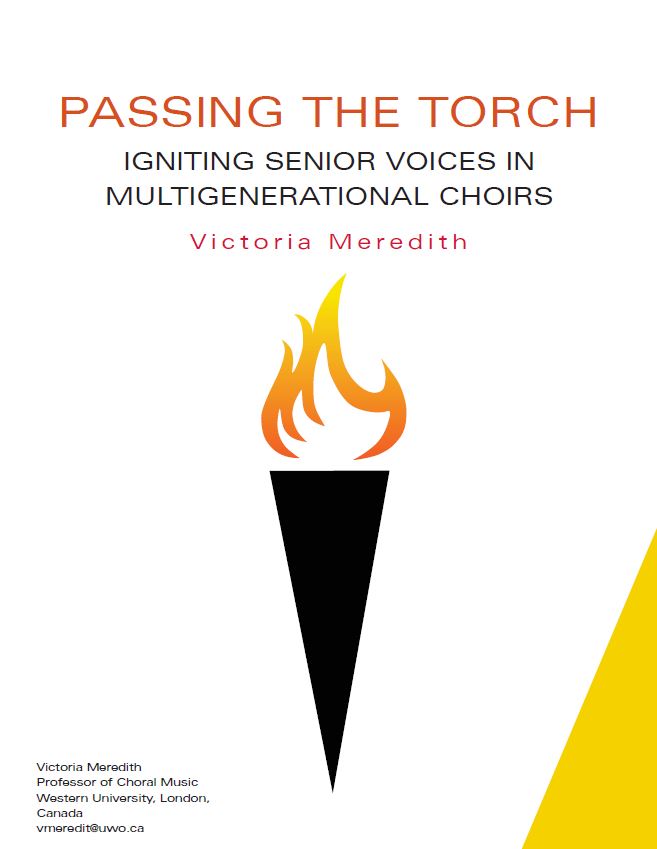
The February 2017 issue of Choral Journal features an article titled “Passing the Torch: Igniting Senior Voices in Multigenerational Choirs” by Victoria Meredith. You can read it in its entirety online at acda.org/choraljournal. Click “Search Archives” and choose February 2017 from the dropdown menu.
_____________________________
A multigenerational choir provides an opportunity for singers of all ages to learn with, from, and about each other as they make music together. Depending upon the ages of the members of the ensemble, increased challenges in repertoire selection and rehearsal techniques confront the conductor seeking to achieve musical satisfaction for all. The thrust of this article is to address the age group most prevalent in multigenerational and intergenerational choirs: seniors. Many multigenerational choirs combine senior adults and younger singers of various ages. A brief survey of some typical types of choirs that incorporate seniors is presented below, followed by suggested guidelines for repertoire selection and related rehearsal techniques. There are several reasons for such a focus.
1) As adults mature, vocal changes often occur that make them uncomfortable singing in the choir or unsure that they are making a meaningful contribution to the group. This might be viewed as similar to what adolescents experience when their voices are changing.
2) Most formal training for conductors is focused on working with children and young adult to middle-aged singers. Normally, little attention is paid to vocal changes that aging adults might be experiencing.
3) There are many fine resources about working with children, adolescents, young adults, and beyond but few devoted specifically to conducting senior adults. At a time when the fastest-growing segment of the population consists of retired people, this is a gap that needs to be addressed for conductors working with that age group.
4) Repertoire selection guidelines and rehearsal suggestions that are essential for choral success with older singers can also benefit younger choir members.
***
There is usually a specific purpose for combining singers of various age demographics. Each ensemble has its own reasons for being formed and its own musical and non-musical goals to be met. Membership in multigenerational groups may be by audition or open to all and may include many styles of musical repertoire. One aspect they all have in common, however, is a wide age span, creating unique challenges for the conductor.
The conductor of a multigenerational choir must ask several questions. The answers will probably reveal both musical and non-musical facets that will have a direct impact on the music selected and on the approaches taken to working with the group.
What is the function of this choir?
Who are these different age groups of singers being combined?
Why are they being combined?
How can I best meet the individual and collective needs of the groups in this combination?
People sing in choirs for many reasons as they seek to achieve aesthetic, social, spiritual, psychological, and physical goals. When asked why they sing in a choir, individuals of all ages often reply that they “just love to sing” or that “singing makes me happy.” Why they sing in a specific choir is often related both to favorable personal interactions with that particular group of people and to the types of music that the group performs.
While there is an ever-growing list of physical benefits to be gained through singing, from lowered blood pressure to a heightened immune system, for most singers these are not the primary reasons that they devote their time and energy to choral singing. In fact, most are not aware of these potential benefits. Commitment to a choir is more likely to be explained by a balance between the musical or social aspects of choral singing.
An intergenerational or multigenerational choir offers the added dimension of experiencing the universality of singing by combining voices with people across the lifespan. It is the conductor’s responsibility to make the experience musically meaningful for singers of all ages.
_____________________________
Read the rest of this article (and more!) in the February 2017 issue of Choral Journal, available online at acda.org.


Leave a Reply
You must be logged in to post a comment.